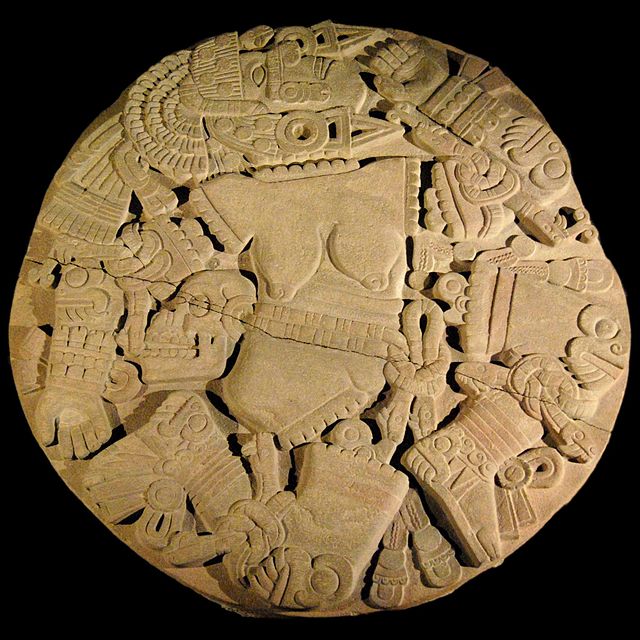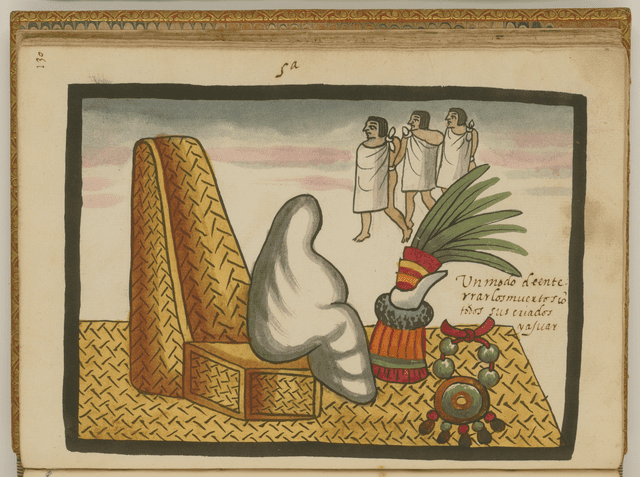Our Team
Student Researcher:
Luca Simplicio, College of Liberal Arts, Philosophy Department
Faculty Advisor:
Francisco Fernflores PhD, College of Liberal Arts, Philosophy Department
Acknowledgements
I would like to acknowledge and express my deepest gratitude to the Cal Poly Office of the Provost & Executive Vice President, the Cal Poly College of Liberal Arts Circle of Giving, and the Cal Poly Office of Student Research for providing the funding and support that made this project possible. I would also like to thank Dr. Francisco Fernflores for his guidance and encouragement throughout this process. Your ability to inspire and foster my love of philosophy makes this research as much yours as it is mine.
Aztec Roots of Chicanx Philosophy
Gloria Anzaldúa’s Process Metaphysics
ABSTRACT
This research aims to advance Anzaldúa scholarship by providing a reading of her work through the lens of Aztec philosophy, in particular Aztec metaphysics. This interpretation is supported by textual evidence in Anzaldúa’s writing. Using the Aztec metaphysical framework also improves our understanding of Anzaldúa’s social, ethical, epistemic, and aesthetic philosophy.
Methodology
Frame hypothesis
Find and evaluate primary and secondary sources
Critically analyze curated primary and secondary sources
Evaluate textual evidence supporting hypothesis through critical discussions
Write essay draft
Critically evaluate drafts to finalize essay for submission to a peer-reviewed undergraduate or graduate philosophy journal
Primary Research
Anzaldúa was explicitly focused on issues of identity formation, the ethical implications of our interconnectedness, and creating new epistemologies, all of which were aimed at healing the wounds caused by colonialism and a western way of knowing the world. I was interested in Anzaldúa’s metaphysical claims, which inform and situate these important philosophical contributions. After much research, I discovered that the Aztec metaphysical framework can help us systematize and better appreciate Anzaldúa’s important philosophical contributions.

Teotl and Inamic Pairs: The fundamental ambiguity of Anzaldúa’s metaphysics
The Aztecs had a monistic conception of ontology. In contrast to dichotomies in western metaphysics, the Aztecs viewed the fundament as being an energy or force rather than, say material or immaterial substance. This process- oriented ontology allows for the ambiguity that arises from the struggle between inamic pairs, which as my research shows, is echoed in Anzaldúa’s conception of a new mestiza consciousness or a new tribalism.
Nepantla: The process of teotl’s becoming and Anzaldúa’s use of the term in her philosophical project
The bulk of my research was devoted to unpacking the metaphysical underpinnings of Anzaldúa’s concept of nepantla. Through an in-depth, critical reading of Anzaldúa, I argue that her use of the term allows for a slippage in language that confuses the underlying metaphysics of nepantla. Using current scholarship around the Nahuatl word, I claim that we can better understand, not only what the Aztec originally thought the term denoted but advance the current scholarship around Anzaldúa’s philosophy. This reading of nepantla, as a weaving process rather than a bridge between two metaphysically distinct substances, is also supported by Anzaldúa’s own writing on nepantla. I argue that focusing on these passages will elucidate the rest of Anzaldúa’s philosophy.
Weaving: The organizing metaphor of Aztec metaphysics and its role in Anzaldúa’s philosophy
Weaving plays an essential role as an organizing metaphor in the Nahuatl conception of metaphysics. This can be contrasted to the western conception of metaphysics that frames the project as carving nature at it joints. This distinction is important to understanding Anzaldúa’s conception of the Coyolxauhqui imparative; a process of becoming or healing that results from bringing our disparate or damaged identities into balance.

Teotle and inimic pairs as an alternative metaphysical framework
- Process metaphysics vs substance metaphysics
- Monism vs ontological pluralism
- Transformative processes
- Ixtli as a mask or visage
- Inamic pairs such as the life-death process
- Coatlique is the deity associated with this struggle between the inamic pairs of life-death
- A new epistemic framework to understand ambiguity in our experience of the world
- The connection to Anzaldúa’s conception of identity as a process of becoming
Nepantla and León-Portilla's influnce
- León-Portilla’s influence on Anzaldúa’s concept of Nepantla
This view erroneously imports substance metaphysics into Aztec process metaphysics
Anzaldúa’s use of the concept of liminality, to explain nepantla, is problematic and reinforces illusory dichotomies.
The Aztec conception of nepantla is best understood in terms of nepantla-type motion change, rather than a liminal space or bridge between two metaphysically distinct substance
Nepantla can and should be contextualized in Aztec metaphysics if we want clarity for its metaphysical implications
Anzaldúa’s concept of the Coyolxauhqui imperative as a nepantla-type motion-change in teotle’s process of becoming
Weaving as an organizing metaphor
Weaving was central to Aztec thought and religion
The idea of teotle weaving itself
Nepantla-type motion change creates an ixtli or pattern in teotle’s process of becoming that allows for an explanation of spiritual processes or becomings
Anzaldúa uses the metaphor of weaving to explain some of
hermost important philosophical concepts, such as the formation of our identities, the ethical implications of our interconnectedness, and the aesthetic elements of her spiritual-activism


